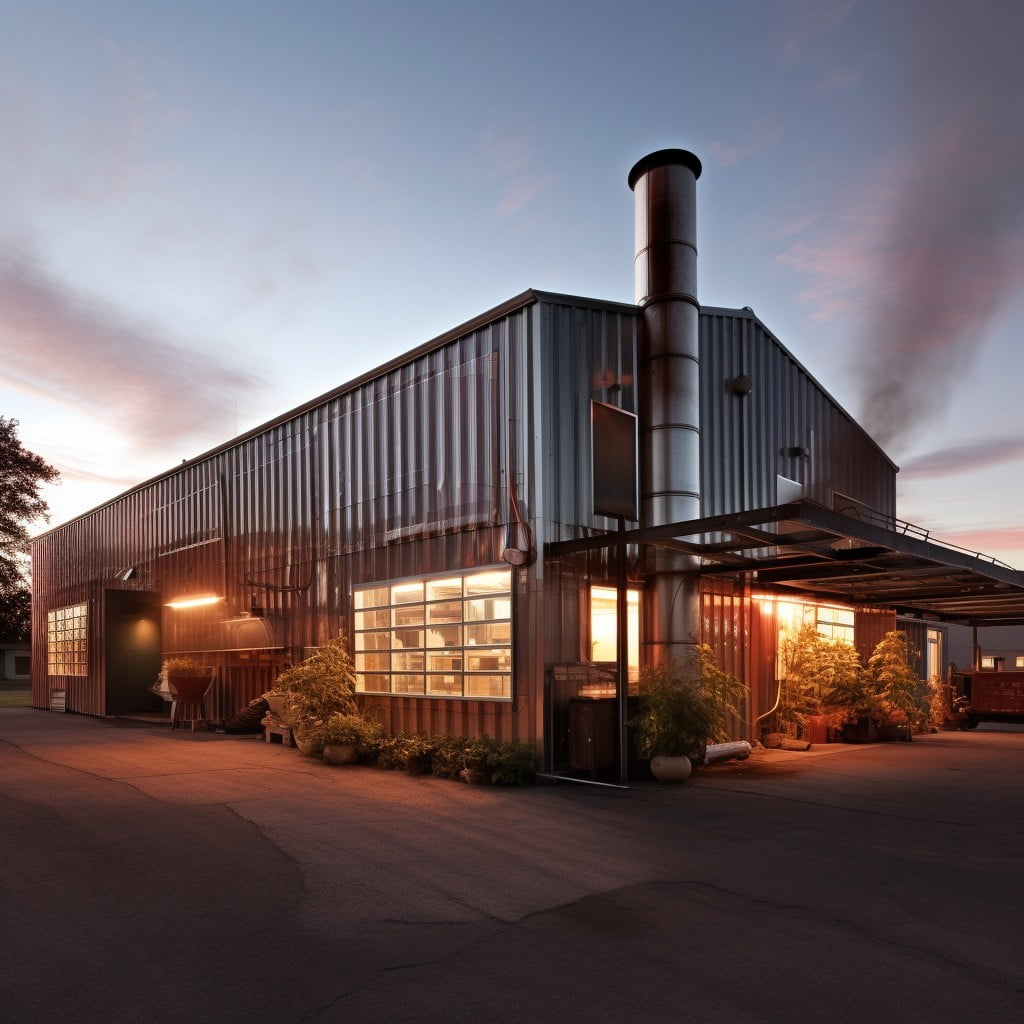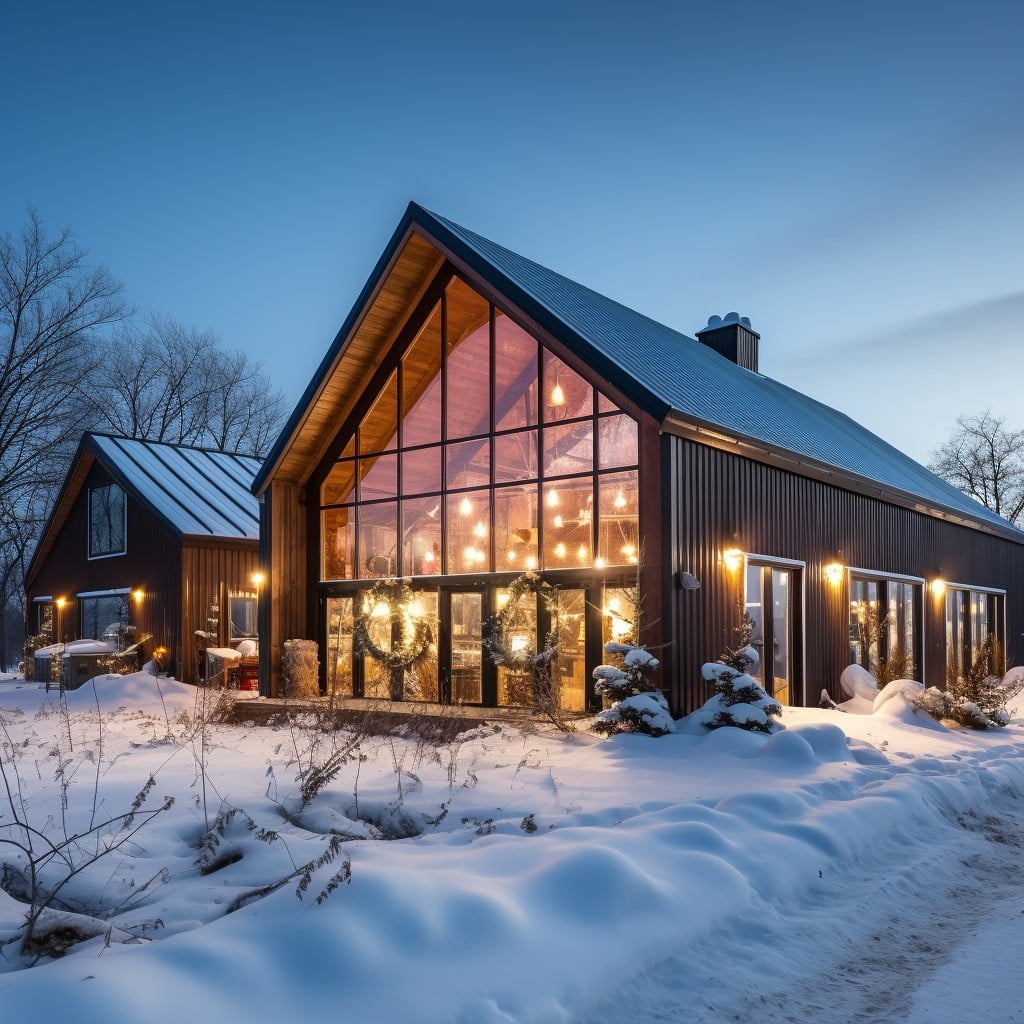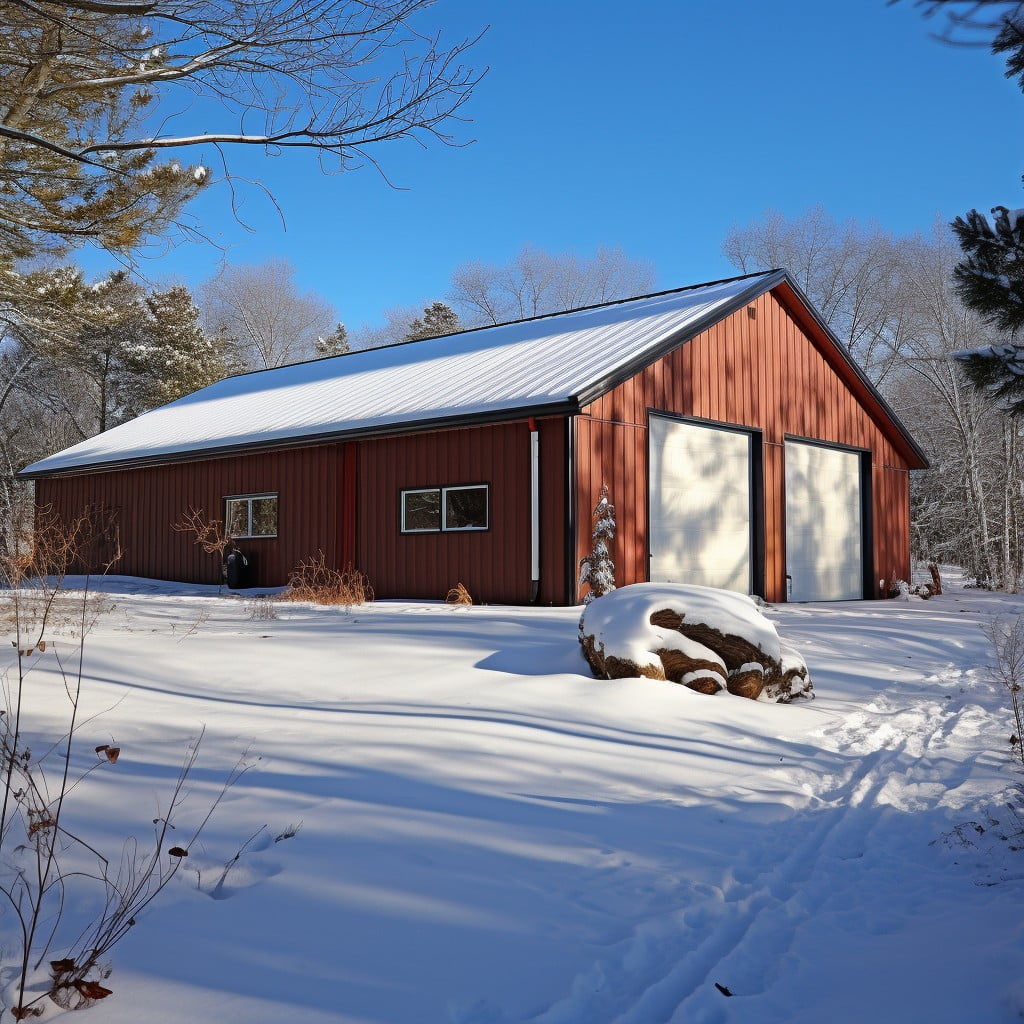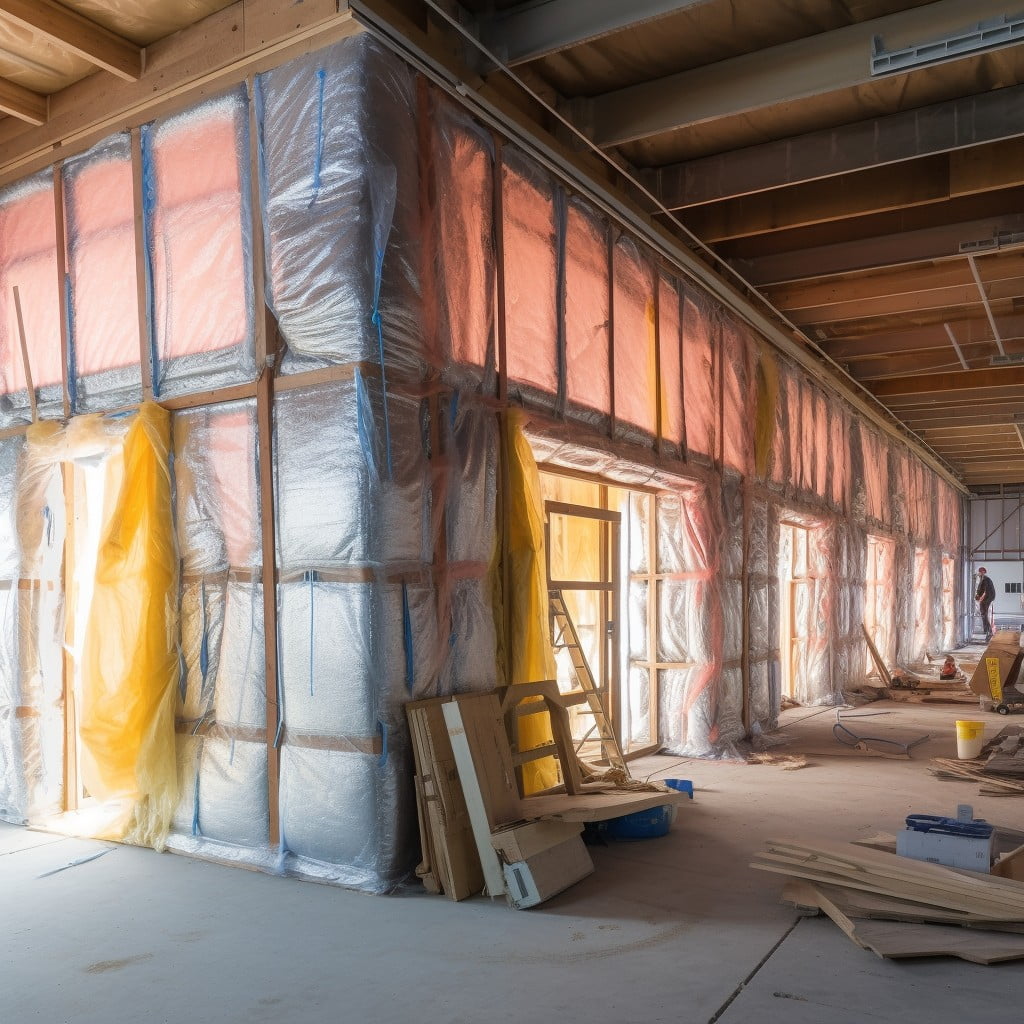Discover effective methods for heating a metal building to ensure optimal comfort and functionality.
Heating a metal building efficiently and effectively requires a strategic approach, considering factors such as insulation, heater type, and building usage.
This article delves into the specifics of these factors, providing a comprehensive guide to ensure your metal building stays warm during the cold months.
With a focus on practical, cost-effective solutions, this piece will guide you through the process, from choosing the right insulation materials to selecting the most suitable heating system for your specific needs.
Stay with us as we explore these details to help you create a cozy environment within your metal building.
Key takeaways:
- Direct fire heaters: efficient gas or propane option
- Radiant heating: warms objects directly, suitable for large spaces
- Electric heaters: versatile and easy to use
- Heat pumps: cost-effective choice for milder winter conditions
- Insulation: energy efficiency, condensation control, temperature regulation, noise reduction
Heating Methods for Metal Buildings

For optimum heating, various methods can be utilized in a metal building. Direct fire heaters, an option fueled primarily by gas or propane, present an efficient choice thanks to their quick heating capability. However, indoor air quality is a consideration with this method, due to the resulting combustion products.
Radiant heating, in which heat waves warm objects directly rather than the air, offers another effective solution. This option aims to reduce heat loss, making it suitable for large, open, or poorly insulated spaces.
Electric heaters come in handy due to their versatility and ease of use, despite often being more costly to operate. The fitting of an electrical heating system can be wall-mounted, baseboard, or portable, making them versatile for various spaces.
Finally, consideration should also be given to heat pumps. Although initially expensive, this option offers a cost-effective choice in areas with milder winter conditions, due to its two-fold ability to provide both heating and cooling.
Importance of Insulation in Heating Metal Buildings

Insulation plays a crucial role due to its ability to reduce heat transfer, maintaining a comfortable interior environment in metal buildings. It acts as a barrier to the flow of warm air, helping to keep the building warm in winter and cool in summer.
1. Energy Efficiency: Insulation works to reduce the amount of energy needed to heat the building, making it a cost-effective way to manage heating and cooling.
2. Condensation Control: Moisture can result in rust and corrosion in metal buildings. Insulated buildings prevent condensation by reducing temperature fluctuations.
3. Temperature Regulation: Insulation helps to maintain consistent temperatures inside the metal building regardless of exterior weather conditions.
4. Noise Reduction: In addition to its temperature regulating benefits, insulation can also help in reducing outside noise levels from penetrating the building structure.
Remember, the quality of insulation material and proper installation is vital for optimal results. Undeniably, including insulation in your metal building design is a smart choice for energy saving and efficient temperature management.
Role of Building Design in Heat Retention

Proper planning hugely impacts thermal efficiency. The building’s orientation should maximize sun exposure during winter months while minimizing it during the summer. Placement of windows and doors also deserves consideration: south-facing windows help harness passive solar heat, but poorly insulated or under-utilized openings draw warmth out.
Insulated exterior cladding, a popular choice, supplements metal building insulation, and creates a more uniform temperature. For optimum performance, consider radiant barriers or reflective insulation to reduce heat transfer.
Internal layout, too, impacts heating efficacy. Open areas, particularly high in the structure, trap warmth, making the lower regions colder. Using layout design or installing ceiling fans can help circulate warm air, enhancing temperature uniformity.
Finally, integrating a thermal break into the design is a foolproof way to obstruct heat loss. This barrier between interior and exterior walls prevents warmth from escaping the structure. With the right design decisions, your building can efficiently retain the heat it generates.
Note: For larger buildings, consider zoning. This technique heats used spaces more than unoccupied zones, optimizing energy use and comfort levels.
Insulating a Steel Building

Quality insulation is critical in counteracting conductive heat gain or loss, a challenge steel structures often face. For optimal insulation, consider spray foam, which provides both high thermal insulating values and seamless air sealing. It forms a barrier against air infiltration, thereby aiding in controlling temperature swings.
Another viable option is fiberglass blanket insulation – easy to install and less expensive. Yet, when considering durability and performance, rigid board insulation stands out, especially for large steel buildings. It offers impressive R-values, noise reduction, and resilience. Rigid Board is optimal when either heated or cooled air is crucial for your operations.
Lastly, reflector or radiant barrier insulation works by reflecting radiant heat away from the structure, making it ideal for keeping buildings cool during summer months. However, its heating benefits shouldn’t be overlooked. It aids in reducing radiant heat loss, and when coupled with other insulation types, it ensures a constant, comfortable temperature year-round.
Each choice offers its unique strengths. The specific selection should be informed by the particular needs, budget, and climatic conditions of your building location. Remember, proper insulation is not just about staying warm, but about energy efficiency, saving on heating costs, preventing moisture infiltration, and enhancing the longevity of your metal building.
Benefits of Insulated Steel Building Kits
When it comes to efficiency and practicality, insulated steel building kits stand out. They offer several distinct advantages:
- Energy Efficiency: High-quality insulation material provides solid treatment against heat loss. This cuts down the demand on heating systems, leading to reduced energy bills.
- Durability: Insulated steel building kits are engineered for lasting resilience. The insulation material boosts the buildings’ resistance to weather decline and increases lifespan.
- Comfort: An insulated metal building maintains a consistent temperature, providing inhabitants with a comfortable environment, irrespective of external weather conditions.
- Prevention of Condensation: Insulation acts as a barrier for condensation to form on the interior surfaces, safeguarding the building structure and stored items from potential moisture damage.
- Noise Reduction: Insulated building kits also provide excellent sound-dampening qualities, creating a quieter, more peaceful interior space. Excellent for buildings close to noise sources, like highways or industrial areas.
These advantages further emphasize the worth of investing in insulated steel building kits for effective building heat management.
Optimizing an Energy-Efficient Layout for Heating in Metal Buildings
Planning the layout of your metal building strategically can lead to significant energy savings. Here are a few things to keep in mind:
1. Windows and Doors: Preferably, these should be situated on the south-facing side to maximize sunlight exposure and natural heat gain during winter. In contrast, minimal or no windows should be on the north side to reduce cold drafts.
2. Partition Walls: Using them can help confine heat to specific sections that need it most, thus making the heating more efficient.
3. High-Performance HVAC System: Choose a heating, ventilation, and air conditioning (HVAC) system designed for maximum efficacy in spaces like metal buildings. Energy-saving systems use less energy and mitigate heat loss.
4. Ceiling Height: Remember that hot air rises. Design the space to take advantage of this fact. Lower ceilings will provide a warmer feeling, while higher ceilings will cause heat to accumulate in areas that aren’t usable.
Remember, every bit of energy you save counts not only in your utility costs, but also in contributing to a more sustainable world.
Winterizing Techniques for Enhanced Heat Retention in Metal Buildings
Sealing any cracks or gaps in the structure of your metal building greatly contributes to heat conservation. Gaps can allow cold drafts to infiltrate the interior, hence simple measures such as caulk application have a great impact on indoor temperature stability.
Investing in specialized weatherstripping for windows and doors is another practical consideration. These prevent warm air escape and cold air intrusion, achieving an enhanced thermal environment within your building.
Heat loss can occasionally occur through metal roofs during particularly cold days. Applying a layer of protective coating to your roof acts as a reflective barrier against this heat loss, playing a critical part in maintaining a consistent indoor temperature.
Lastly, consider the installation of thermal curtains or insulated blinds. These accessories work wonders in trapping heat inside and blocking the cold from seeping in through windows. They also add an attractive aesthetic value to the interior environment of your metal building.
Applying these winterizing techniques properly will maximize heat retention within metal building environments during colder months. Without adding too much to your overall building cost, these measures provide a great return in terms of energy efficiency and cost savings in the long run.
FAQ
What is the most efficient way to heat metal building?
The most efficient way to heat a metal building is by installing radiant barrier insulation on the exterior metal panels between the panels and support beams, which redirects heat back into the structure, thus maintaining a warmer temperature.
Are steel buildings hard to heat?
No, steel buildings are not hard to heat as long as the proper insulation is installed matching the climate zone and local building codes requirements.
Can you heat and cool a metal building?
Yes, a metal building can be both heated and cooled through various methods, such as insulation, installing ventilation systems, instructing awnings, and painting the roof with a light color or adding a cool metal roof system.
Can you heat a steel shed?
Yes, a steel shed can be heated with the implementation of proper insulation and an appropriate heating system.
What types of heating systems are best suited for a metal building?
Radiant heaters, forced air heaters, and heat pumps are typically best suited for heating metal building constructions.
How does insulation aid in regulating temperature in a metal structure?
Insulation in a metal structure works by resisting heat flow, thus helping to keep the interior warm during winter and cool during summer.
Can radiant heating be employed in a steel building?
Yes, radiant heating can be effectively used in a steel building.
Recap




